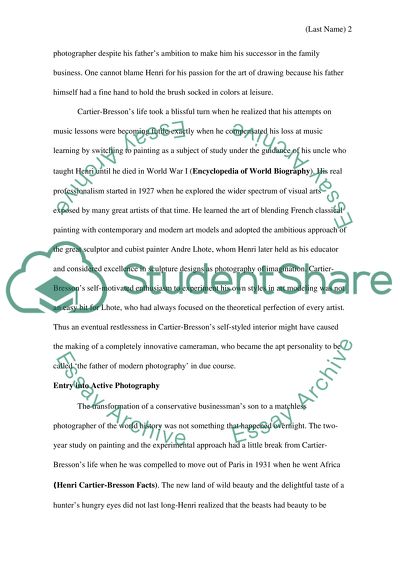Cite this document
(“Talk about Henri Cartier-Bresson Essay Example | Topics and Well Written Essays - 1500 words”, n.d.)
Retrieved from https://studentshare.org/visual-arts-film-studies/1472496-talk-about-henri-cartier-bresson
Retrieved from https://studentshare.org/visual-arts-film-studies/1472496-talk-about-henri-cartier-bresson
(Talk about Henri Cartier-Bresson Essay Example | Topics and Well Written Essays - 1500 Words)
https://studentshare.org/visual-arts-film-studies/1472496-talk-about-henri-cartier-bresson.
https://studentshare.org/visual-arts-film-studies/1472496-talk-about-henri-cartier-bresson.
“Talk about Henri Cartier-Bresson Essay Example | Topics and Well Written Essays - 1500 Words”, n.d. https://studentshare.org/visual-arts-film-studies/1472496-talk-about-henri-cartier-bresson.


